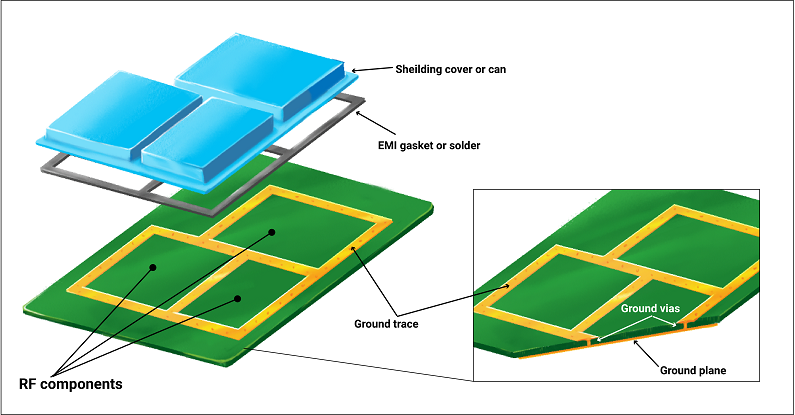7 Tips and PCB Design Guidelines for EMI and EMC Circuit Diagram Mastering high-speed PCB routing techniques for EMI reduction is crucial in today's electronic design landscape. By implementing the strategies outlined in this guide - from optimizing layer stack-ups and differential pair routing to careful power distribution and post-layout mitigation techniques - designers can significantly reduce the Discover PCB design practices for reducing EMI and improving EMC. Optimize your designs with component isolation, EMI filtering, and OrCAD X tools. Learn essential PCB design guidelines for EMI reduction, enhance EMC, and achieve reliable signal integrity. Explore strategies for components, layout, and OrCAD X. It is best to use separate 7 design guidelines for EMI and EMC reduction in a PCB. How do you design a board with low or absolutely zero electromagnetic interference? Well, it isn't impossible. The design practices below will make sure you do not create antennas that emit electromagnetic energy. These best design practices will reduce the length and area of the

Mastering the art of PCB design for EMI reduction is paramount in ensuring the flawless operation of electronic devices and achieving EMC in a wide range of applications. A best practice in design is to place components that process similar types of signals in close proximity and separate them from components handling different signal types A proficient PCB producer can aid in design improvement, material selection, and testing for compliance with the standard regulations on EMC. 5. What are the best practices for minimizing EMI issues in high-speed PCB designs? Impedance matching, coupling through differential pairs and active decoupling are some of the means to minimize EMI in

EMC in PCB Design: Best Practices and Tips for EMI Reduction Circuit Diagram
EMC Issues In PCB Design. EMC problems in PCB design can arise from a number of causes, including: 1. High-speed signals: These signals have the potential to emit electromagnetic energy/ noise that might obstruct the operation of other PCB components or external devices. 2. Dealing with EMI in PCB design is a crucial aspect of creating reliable, high-performance embedded systems. By understanding the sources of EMI and implementing best practices like optimized stack-up, proper grounding, trace layout, and shielding, engineers can design noise-free PCBs that meet performance and compliance requirements.

High-frequency signals or large current spikes can produce strong electromagnetic fields that may interfere with nearby electronic components, leading to EMI. PCB Stack-up and Layer Configuration. A well-planned PCB stack-up can significantly reduce EMI. A typical multilayer PCB consists of signal layers, power planes, and ground planes. PCB Layout Techniques for Minimizing Crosstalk and EMI . Fortunately, a well-crafted PCB layout strategy can significantly reduce crosstalk and EMI. Here are some key techniques to consider: 1. The Power of the Ground Plane . The ground plane is an often overlooked yet essential element in PCB design.
